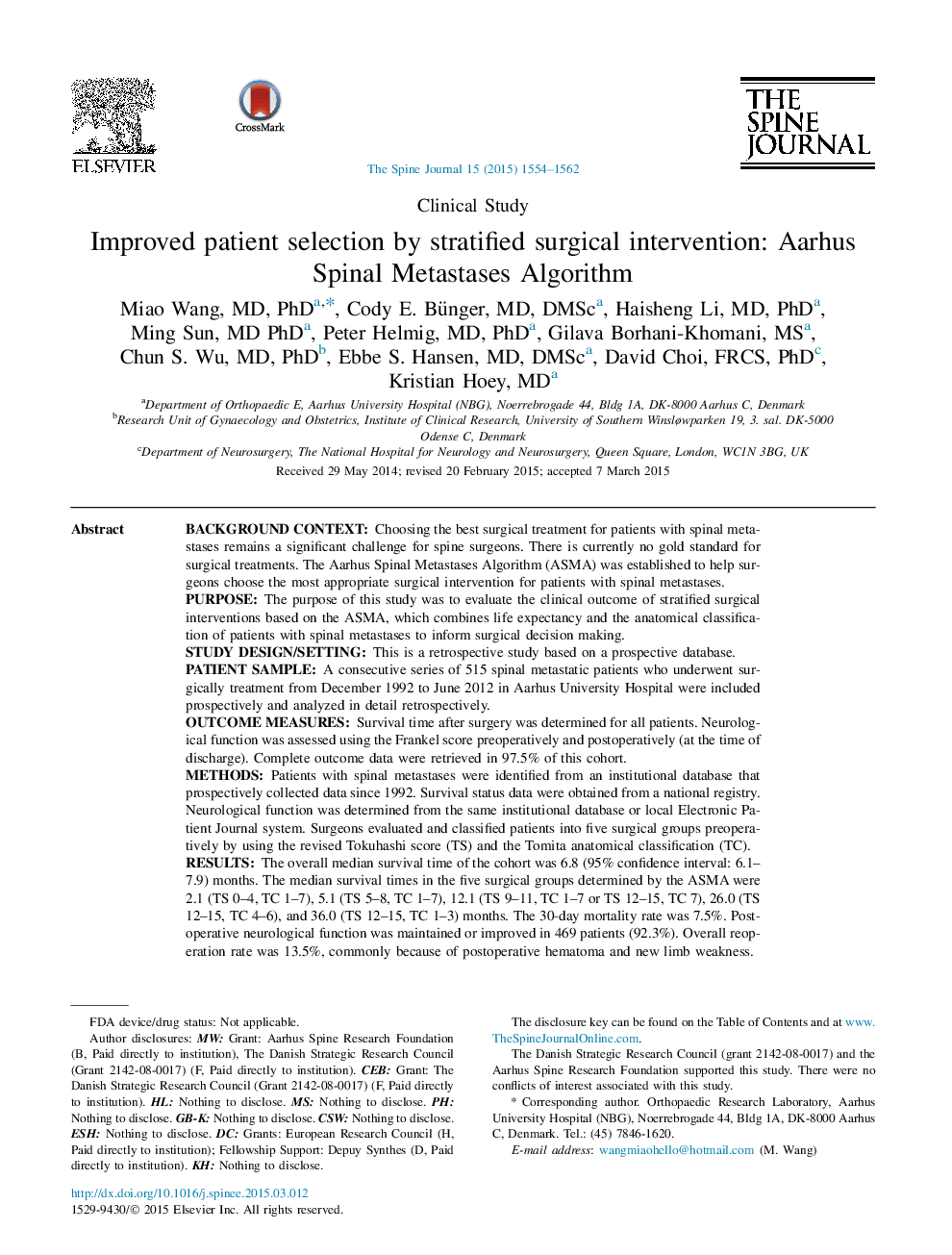| کد مقاله | کد نشریه | سال انتشار | مقاله انگلیسی | نسخه تمام متن |
|---|---|---|---|---|
| 4096068 | 1268551 | 2015 | 9 صفحه PDF | دانلود رایگان |
Background contextChoosing the best surgical treatment for patients with spinal metastases remains a significant challenge for spine surgeons. There is currently no gold standard for surgical treatments. The Aarhus Spinal Metastases Algorithm (ASMA) was established to help surgeons choose the most appropriate surgical intervention for patients with spinal metastases.PurposeThe purpose of this study was to evaluate the clinical outcome of stratified surgical interventions based on the ASMA, which combines life expectancy and the anatomical classification of patients with spinal metastases to inform surgical decision making.Study design/SettingThis is a retrospective study based on a prospective database.Patient sampleA consecutive series of 515 spinal metastatic patients who underwent surgically treatment from December 1992 to June 2012 in Aarhus University Hospital were included prospectively and analyzed in detail retrospectively.Outcome measuresSurvival time after surgery was determined for all patients. Neurological function was assessed using the Frankel score preoperatively and postoperatively (at the time of discharge). Complete outcome data were retrieved in 97.5% of this cohort.MethodsPatients with spinal metastases were identified from an institutional database that prospectively collected data since 1992. Survival status data were obtained from a national registry. Neurological function was determined from the same institutional database or local Electronic Patient Journal system. Surgeons evaluated and classified patients into five surgical groups preoperatively by using the revised Tokuhashi score (TS) and the Tomita anatomical classification (TC).ResultsThe overall median survival time of the cohort was 6.8 (95% confidence interval: 6.1–7.9) months. The median survival times in the five surgical groups determined by the ASMA were 2.1 (TS 0–4, TC 1–7), 5.1 (TS 5–8, TC 1–7), 12.1 (TS 9–11, TC 1–7 or TS 12–15, TC 7), 26.0 (TS 12–15, TC 4–6), and 36.0 (TS 12–15, TC 1–3) months. The 30-day mortality rate was 7.5%. Postoperative neurological function was maintained or improved in 469 patients (92.3%). Overall reoperation rate was 13.5%, commonly because of postoperative hematoma and new limb weakness.ConclusionsThe ASMA recommends at least two surgical options for a particular patient by determining the preoperative life expectancy and anatomical classification of the spinal metastases. This algorithm could help spine surgeons to discriminate the risks of surgeries. The ASMA provides a tool to guild surgeons to evaluate the spinal metastases patients, select potential optimal surgery, and avoid life-threatening risks.
Journal: The Spine Journal - Volume 15, Issue 7, 1 July 2015, Pages 1554–1562
